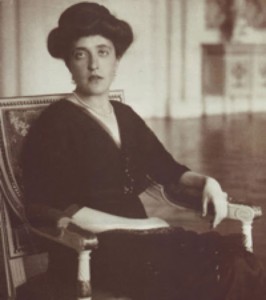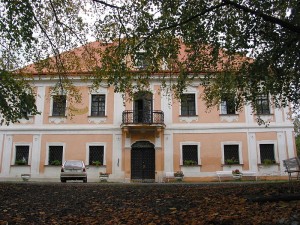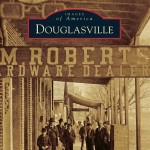
I sat through the movie Woman in Gold the other day, and contrary to the critics who say the movie is a dull treatment of the real history, I actually enjoyed the show.
Of course, there IS more to the story. Some liberties were taken with Maria Altman’s story before and after she reached the United States.
It’s a movie, remember?
The movies are entertainment, and they rarely treat history in its pure form. For that, we might want to see the documentary titled Adele’s Wish by Terrence Turner, the husband of Maria’s great niece.
Still, I sat through the movie and was entertained and motivated enough to come home and look for more of the story, and I wasn’t disappointed.
What was left out of the movie was just as interesting as what Hollywood included, but first – a little recap regarding what the movie did share.
Can you imagine suing a foreign country?
The basic story the movie explores is Maria Altman and her nearly ten year struggle to reclaim her family’s property taken from them during World War II by the Nazis.
Maria, played by Helen Mirren enlists the help of family friend, E. Randol Schoenberg, played by Ryan Reynolds who acts as her attorney.
Maria Altman was not only able to reclaim the portrait of her aunt, but recovered a total of five paintings, all the work of Gustav Klimt.
The painting we see in the movie is not the real one, of course. It’s a reproduction made specifically for the movie. It took scenic artist Steve Mitchell five weeks to recreate the painting. The real one took Klimt three years to complete.
Klimt is an interesting “character” all on his own. In 1894 he was commissioned to complete three works for the Great Hall of the University of Vienna. The Three paintings were titled “Philosophy”, “Medicine”, and “Jurisprudence”.
Those are great titles for paintings that would hang at a university, right?
Apparently, folks thought the sexual tone of the paintings was too much, and they were never displayed. They were destroyed in 1945 as the Nazis retreated from Vienna.
Klimt, an Austrian was known as a symbolist painter meaning his work was a reaction against realism and naturalism. Take one glance at the Woman in Gold painting and you get the idea.
The subject of the actual Woman in Gold painting was Maria Altman’s aunt, Adele Bloch-Bauer who was a patron of the arts and well known in the salon scene of Vienna in the early 1920s when it was the cultural capital of the world.
Adele was 25 when the portrait was complete. Take a look at how her hands are folded in the portrait. She held them that way to hide a deformed finger.
For all of her beauty and wealth it seems Adele’s tale was tragic. She had three babies who all died, and Adele herself died in 1925 after contracting meningitis.

Gustav Klimt painted two portraits of her. In fact, she is the only woman Klimt painted twice sparking rumors that the two were romantically involved. The paintings of Adele were commissioned by Adele’s husband and Maria’s uncle, Ferdinand Bloch-Bauer. He had made his fortune in sugar and owned OZAG Sugar Refinery.
Ferdinand was able to leave Vienna and escape the Nazis by going to Switzerland. Of course, he had to leave his property behind including the paintings.
During the Anschluss the Nazis took the paintings and the rest of his property.
In the book Holocaust Restitution: Perspectives on the Litigation and Its Legacy, Bazyler and Alford advise, “…one week before the Anschluss that annexed Austria in the Third Reich, the Bloch-Bauer family journeyed to Zurich and placed their shares in OZAG, Austria’s largest sugar refinery, in a custody account with a Swiss bank, with instructions the shares were not to be sold without the unanimous consent of the family members.”
The bank did not follow directions of the family and years later used the excuse that all records had been destroyed. Howeer, the Bloch-Bauer family had managed to keep their records, and the paperwork told the tale.
The movie never touches on the fact that several family members including Maria Altman did win a $21 million dollar judgment against the Swiss bank in 2005, so not only did the family receive restitution from the bank, they eventually received the paintings, too.
In the movie Maria and her husband Fritz decided to escape Austria, and they are depicted being chased by the Nazis, but there’s more to the story.
Maria’s husband, Fredrick “Fritz” Altman was first held by the Nazis as a sort of ransom at Dachau concentration camp. His uncle, Bernard Altman owned a prosperous textile factory, but had managed to escape to France just in time. The price for Fritz’s freedom was to turn the factory over to the Germans. Now without property, money, etc. Bernard finally made his way to England where he eventually got involved in the cashmere sweater trade.
More about that in a minute…
The fabulous necklace Adele is wearing in the portrait did exist and belonged to her. Ferdinand intended on passing the necklace to Maria, but when the property was confiscated the necklace ended up on the neck of Emmy Goring, wife of Hermann Goring, leader of the Nazi Party.
The “apartment” that is portrayed in the movie near the Vienna State Opera House wasn’t Ferdinand’s only residence. His grand home outside Prague called Schloss Jungfern was taken over by Reinhard Heydrich who ruled Czechoslovakia and is credited as the mastermind behind the Nazi’s “Final Solution”.

The movie touches on Maria and Fritz eventually arriving in America, but during the movie it appears Maria is all alone in the world making her relationship with attorney Randy – E. Randol Schoenberg – even more believable. In actuality, Maria and Fritz had four children. While you can find three of their names in genealogies, for the most part it appears they wish to remain out of the public eye.
I can’t say that I blame them.
Maria’s parents were portrayed in the movie, but there is more to the story. One of the more touching scenes involved her goodbyes to them when she and Fritz decided to escape. They knew they would never see one another again. Maria’s father was Gustav Bloch-Bauer, an attorney. It seems he spent most of his time wandering art galleries, playing his Stradivarius cello which the Nazis took, and advising his brother. He died on July 2, 1938 just four months following the Anschluss. Maria’s mother, Therese Bloch-Bauer died in 1961 at the age of 86, so I have to assume she eventually reunited with her daughter, but that wasn’t discussed in the movie.
The two brothers were so very close because they married sisters. Yes, Therese and Adele were sisters – brothers married sisters. This is the reason why the family linked their names together for all time – Bloch-Bauer
The movie barely touches on E. Randol Schoenberg’s personal connection to Maria’s family, Vienna, and Nazi persecution, but he is the grandson of two famous Viennese composers – Arnold Schoenberg and Erich Zeisl – and his family was hit hard by Nazi occupation as well.
In the movie it appears that Maria makes a passable income as a women’s clothing boutique owner. However, that’s not the whole story.
Remember when I mentioned Fritz’s uncle made it to England and got involved with the cashmere sweater trade?
Maria Altman isn’t just remembered today as the woman who sued Austria and managed to retrieve some stolen Nazi loot. Bernard sent Maria a cashmere sweater and asked her to see if folks in the United States might be interested in them. She took the sweater to a Beverly Hills department store, and of course, they loved it. During the 1950s the sweater sets became a real fad.
Maria did open her own boutique while Fritz worked at Lockheed.
And what about the painting today? It sold for $135 million to Ronald Lauder of Estee Lauder fame and is on display in his gallery, Neue Galerie in New York City.
Austria’s greatest treasure, the stolen treasure that took an international lawsuit to finally settle, arrived at its new home packed in a crate aboard an eighteen wheeler and now rests behind bullet proof glass.
For more on the Marie Altman story you might want to check out the book by Gregor Collins titled The Accidental Caregiver. He answered an ad in 2007 and ended up caring for the then 92-year old Maria. The book contains many details not given in the movie.




I saw the “Woman in Gold” original painting about 6 weeks ago while on my daughter’s choir tour of Austria. It was stunning and quite surreal to sit on a gallery floor and look at this beautiful and iconic painting. Haven’t seen the movie yet but I want to!
Thank you for this post. I was left with much curiosity after watching the film. Although I still want to know what happened to the necklace.